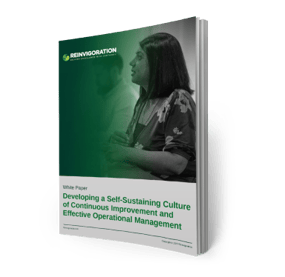Five Essential Components of Continuous Improvement and Operational Excellence Deployment

Continuous improvement (CI) and operational excellence (OpEx) are critical components of any successful organisation. By continuously improving processes, reducing waste and increasing efficiency, organisations can streamline operations, increase customer satisfaction, and reduce costs. However, deploying continuous improvement and operational excellence initiatives is not easy and requires careful planning, clear communication, and a robust support system.
To ensure that your organisation is well-positioned for success in CI/OpEx deployment, you should consider five essential components:
- Culture change
- Process improvement
- Technology enablement
- Organisational capability building
- Stakeholder engagement.
By understanding how each component works together as part of an integrated strategy to drive successful CI/OpEx deployment in your organisation, you can set yourself up for long-term success with these initiatives.
In this blog, I will explore five essential components of continuous improvement and operational excellence deployment.
1. Obtain top-down buy-in
The first vital component towards success is obtaining buy-in from the entire hierarchy on the need for OpEx and CI. This is achievable through proper and consistent engagement sessions with the workforce, especially the senior leadership and key stakeholders. During engagement sessions, clearly explain and define how your strategy deployment plays into the organisation’s direction and objectives and the “how and why” change should happen. Effective engagements using a systematic approach explaining the shared benefits of your optimisation plan can result in a top-down cascade of your objectives and a more substantial buy-in.
2. Clearly define your training deployment methodology
Once everyone is on board with your OpEx deployment plans, developing a clearly defined framework, including the training and implementation process, is important. Avoid forcing changes onto your workforce which have not been clearly communicated and effectively designed; instead, bring them along for the OpEx and CI journey, to engage them through the process. The framework should be implemented systematically, allowing all levels to understand how they contribute towards achieving collective success. Continuous engagement provides a better understanding of the objectives behind each stage and will deliver a successful outcome.

3. Use clear, tangible metrics and measures to track performance
As your methodology cascades throughout the organisation, the next step is realising the benefits and communicating to your leadership and operations teams. You must ensure you have baselined the performance at the start of deployment and then reviewed at integral points to understand if the potential benefits are viable and can be delivered. Explaining to your staff the intended future state of your operations makes it easier for them to relate the significance of their roles in delivering the objectives.
4. Create internal CI and OpEx capacity for minimal disruptions
Once OpEx and CI fundamentals are effectively deployed throughout the organisation, the next step would be identifying internal CI or OpEx champions to support the ongoing optimisation exercises. It helps to have CI or OpEx champions comprised of both members of the leadership and from general operations. Internally supporting CI and OpEx helps create a sense of ownership for the new ways of working and drives sustainability throughout the organisation. As the internal capability increases, the appetite to support and deliver larger transformation programmes increases, and the operations is effectively set up to engage in the change.
5. Leverage the expertise of CI and OpEx experts
Organisations that lack internal CI and OpEx capabilities often rely on their internal OpEx leaders to formulate and implement new ways of working to address all their pain points. However, forward-thinking CI leaders have begun leveraging OpEx professionals’ expertise to assist and guide them along the development and deployment phase. These experts will internalise themselves into your organisation and operations and become a member of your team to deploy sustainable operational excellence and CI effectively. Organisations with smaller CI teams also leverage these experts and their methodologies to build internal CI capability. faster by avoiding common pitfalls and mistakes.
Are you looking for more tips and advice on deploying CI and OpEx initiatives?
Our white paper, Developing a Self-Sustaining Culture of Continuous Improvement and Effective Operational Management, provides potential strategies and tactics on driving operational excellence as you work towards implementing a sustainable culture of continuous improvement.


